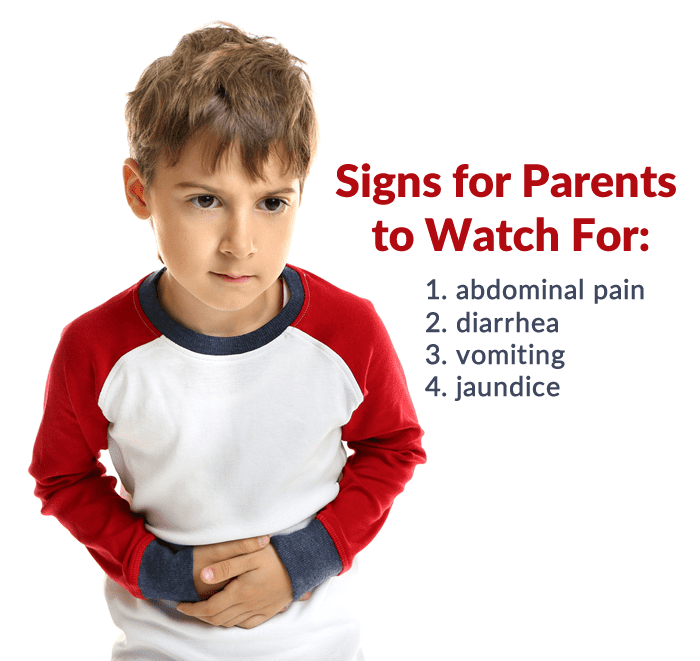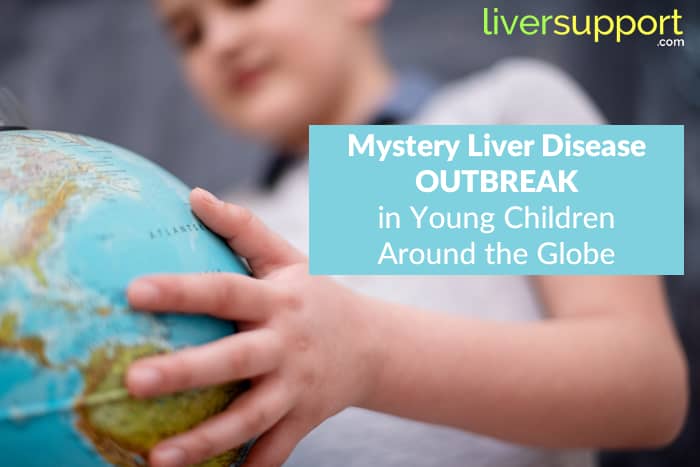
Previous
Can Kisspeptin Help Treat NAFLD?

Next
FDA Fast-Tracks New NASH Therapy
Mystery Liver Disease Outbreak in Young Children Around the Globe
Getting your child immediate medical attention can help determine if this potentially serious mystery liver disease is the source of symptoms, including abdominal pain, vomiting, and more.
Research conducted in 2021 tells us that roughly 18.5% of adolescents and young adults in the U.S. have nonalcoholic fatty liver disease (NAFLD). (1) However, many parents around the globe are experiencing a new fear surrounding their children’s liver health. The cause of this fear is something that many are referring to as a “mystery liver disease.”
To make matters worse, it appears to be spreading.
Mystery Liver Disease Appearing in Children Worldwide
On April 23, 2022, the World Health Organization (WHO) revealed a disturbing trend in which young, previously healthy children from all over the world appear to be developing acute hepatitis with no known origin. Acute hepatitis involves an inflammation of the liver that occurs suddenly.
In its Disease Outbreak News report, WHO indicated that 169 cases of acute hepatitis had been reported as of April 22, 2022, coming from a total of 11 different countries. The United Kingdom has been hit the hardest with 114 children developing this condition of unknown origin. This is followed by Spain (13 children), Israel (12 children), and the United States (9 children).
The U.S. outbreak appeared in October-November of 2021, when five pediatric patients were admitted into an Alabama children’s hospital with severe hepatitis. (2) This was followed by the admittance of four more kids by February 1, 2022.
What’s probably most alarming is that this disease outbreak is hitting children as young as one month old and ranging up to those 16 years of age, according to the WHO report. Additionally, one child has died and another 17—roughly 10% of the kids affected by this outbreak—have required a liver transplant.
What’s Behind This Acute Hepatitis Outbreak?
One of the potential causes of this acute hepatitis outbreak in children is the adenovirus, as WHO states that it has been found in at least 74 of the children. (It was also found in the five initial patients at the Alabama children’s hospital.)
If you’ve never heard of the adenovirus, you aren’t alone.
But you may be a bit more familiar with the types of illnesses this family of 60 different viruses can cause, some of which include:
- bronchitis
- pneumonia
- pink eye
- croup
- and even a sore throat. (3)
The Centers for Disease Control and Prevention (CDC) shares that the adenovirus is commonly transmitted through close contact, as well as through the air, such as when coughing or sneezing. (4) It can also be spread through contact with the child’s stool, such as when changing their diaper, or even through swimming in the same pool, although this risk seems to be lower.
Yet, in many cases, adenovirus infections don’t result in severe conditions. This is what has health officials scratching their heads, making them wonder if this virus is the true cause of the hepatitis outbreak in children or if some other issue might be at play.
At the same time, the typical viruses behind acute hepatitis aren’t being found in these kids. And it doesn’t appear that international travel is a contributing factor either.
Signs for Parents to Watch For
Understandably, the news of an acute liver disease outbreak among children has many parents on pins and needles, hoping that their child isn’t the next to contract this condition. To help calm your nerves, it can also be helpful to know what to look for.

According to the information collected by WHO, some of the most common symptoms of this mystery liver disease have included:
- abdominal pain
- diarrhea
- vomiting
- jaundice (yellowing of the skin and eyes)
Johns Hopkins adds that other signs of hepatitis in children are fatigue, dark-colored urine, light-colored stools, abdominal swelling, and malaise or general feelings of discomfort or illness. (5)
What to Do If Your Child Develops Symptoms of Acute Hepatitis
If you notice that your child has any of these symptoms, getting them immediate medical attention can help identify whether this potentially serious liver disease might be the cause.
WHO recommends that healthcare providers conduct blood tests, along with doing serum tests, urine and stool tests, and the taking of respiratory samples. A liver biopsy sample may also be performed, all of which can help identify the cause of the condition.
Until the true cause of this outbreak is known, it is also recommended that basic hygiene measures be followed. (6) This includes frequent washing of hands and covering the mouth when coughing and sneezing. Teaching your child to do these important actions may help protect them, especially if it is determined that the adenovirus is the root cause.
(1) Arshad, T., Paik, J., Biswas, R., et al. (2021, July 01). Nonalcoholic fatty liver disease prevalence trends among adolescents and young adults in the United States, 2007-2016. Hepatology Communications. doi:10.1002/hep4.1760
(2) Centers for Disease Control and Prevention. (2022, May 06). Acute Hepatitis and Adenovirus Infection Among Children – Alabama, October 2021-February 2022. Retrieved May 11, 2022, from https://www.cdc.gov/mmwr/volumes/71/wr/mm7118e1.htm
(3) Cedars-Sanai. (2018, December 04). What Is Adenovirus? Retrieved May 11, 2022, from https://www.cedars-sinai.org/blog/what-is-adenovirus.html
(4) Centers for Disease Control and Prevention. (2019, August 28). Adenoviruses: Transmission. Retrieved May 11, 2022, from https://www.cdc.gov/adenovirus/about/transmission.html
(5) Johns Hopkins Medicine. (n.d.). Hepatitis in Children. Retrieved May 11, 2022, from https://www.hopkinsmedicine.org/health/conditions-and-diseases/hepatitis/hepatitis-in-children
(6) Pan American Health Organization. (2022, May 03). Q&A – Acute Severe Hepatitis in Children. Retrieved May 11, 2022, from https://www.paho.org/en/news/3-5-2022-qa-acute-severe-hepatitis-children






